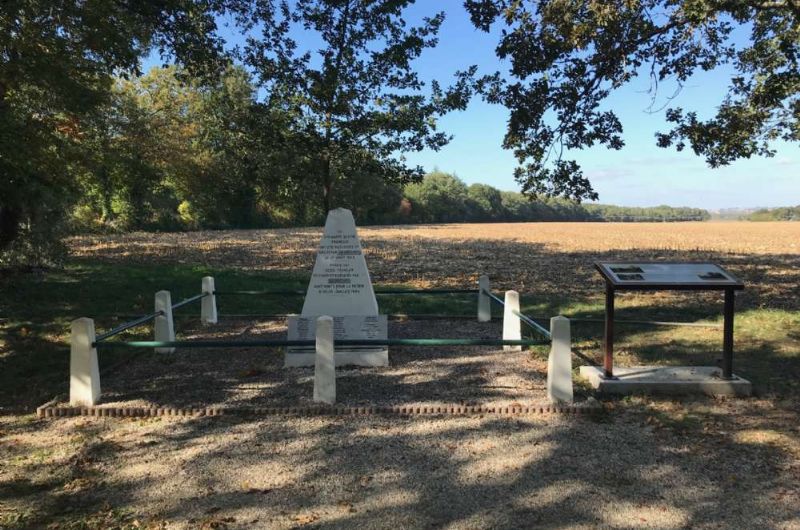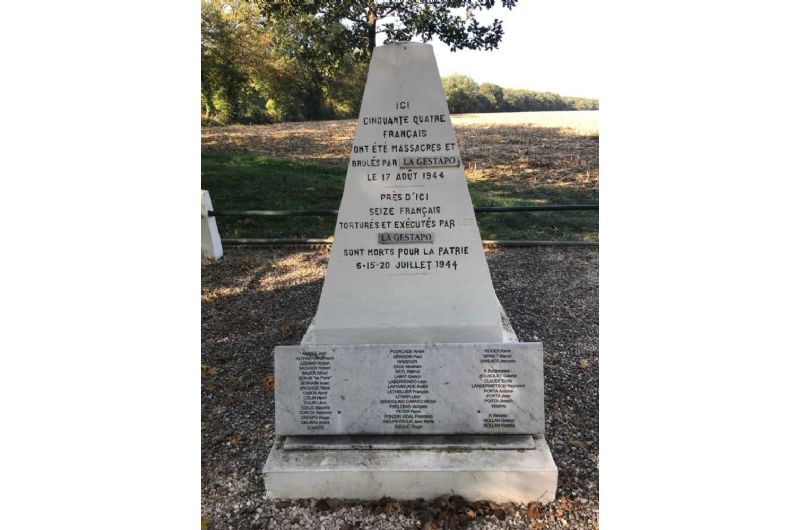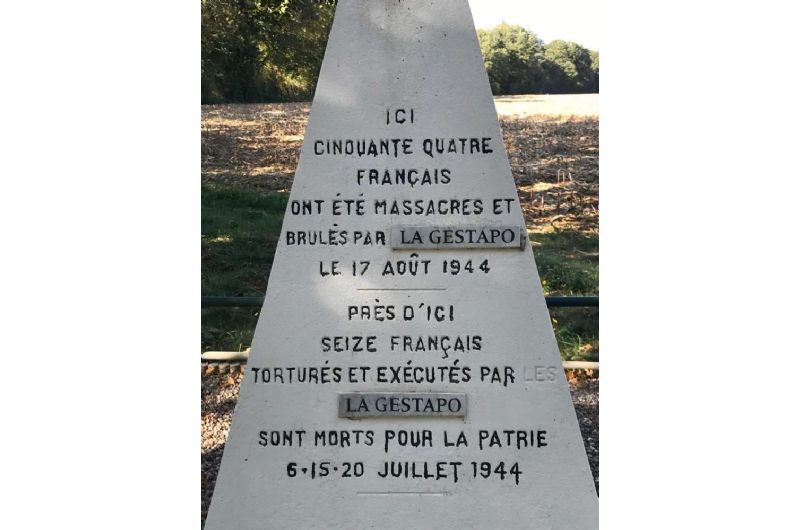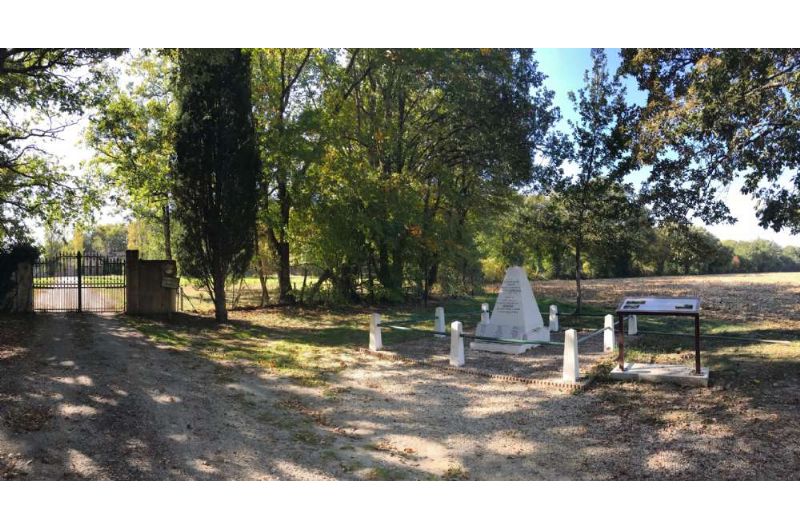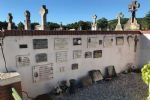Massacres at Buzet-sur-Tarn
- 16
- See on map
Panel text:
Victims of Thursday, July 6 and Friday, July 7, 1944.
After a denunciation, the "black fox" (man dressed in black leather), a member of the gestapoand soldiers of the Deis Reich brought 6 resistantsfrom Buzet to this location. As they lay there all afternoon, harassed and beaten, the mayor Emile Massio is said to have told his companions "Boys don't talk". They were then shot at around 5pm. It wasn't until 4 days later that a mushroom researcher found the bodies and brought them back in a tombereau to their families.
The same morning, the same convoy had shot the 3 resistance fighters from the famille Porta at their Borde basse farm. Their family had little time to escape, as the farm was set on fire. On the night of July 6 to 7, the époux Rollan, resistance fighters, were wildly massacred at their Vieusse farm under the eyes of their children, by the same Germans drunk on their misdeed.
Thursday, July 20, 1944
In this place is shot Pierre Jarré, 30 years old from the Grenade maquis.
On July 18, the maquis de Grenade stops a German attack during a bataille de Naples (lieu dit en forêt) near Burgaud. The Germans lose 26 soldiers and have 40 wounded in the fight. Joseph, nicknamed Pierre Jarré, a 30-year-old peacekeeper from Toulouse, is captured and shot by an SS patrol sent by the Gestapo. Gabriel Carme, 20, an escapee from the St Sulpice la Pointe detention camp, suffers the same fate.
Thursday, August 17, 1944:
Having received orders to empty the prisons before their retreat, the gestapo sends the SS to take 29 inmates from St Michel prison, and 25 from Furgolle prison and Compans barracks. At around 5pm, when the August heat was barely bearable, the prisoners were transported by tarpaulin-covered lorry to a place called "En Fournet" on the farm that belonged to the forest ranger Gaston Ravary, shot on July 6. The prisoners are unloaded and locked in the barns. Then begins apitiless shooting. The bodies are then hurled into two previously lit pyres. These fireplaces burned all evening and part of the night, fueled by soldiers who came to throw gasoline on them.
When Toulouse was liberated on August 19, the new mayor M. Pech wrote on August 22 "in the ruins, we noted the presence of numerous unidentifiable human remains"
In the Buzet archives, a list counted 22 names whose identity was later proven. Research has since led to the identification and biography of 34 people. The En Fournet monument was moved to this location when the golf course was built. This is the only massacre in the region. Most of the victims were extraordinary people who, right up to the last moment, thought of nothing but each other and their freedom.
Contribution and photo credit: Raphaël Mégard.

